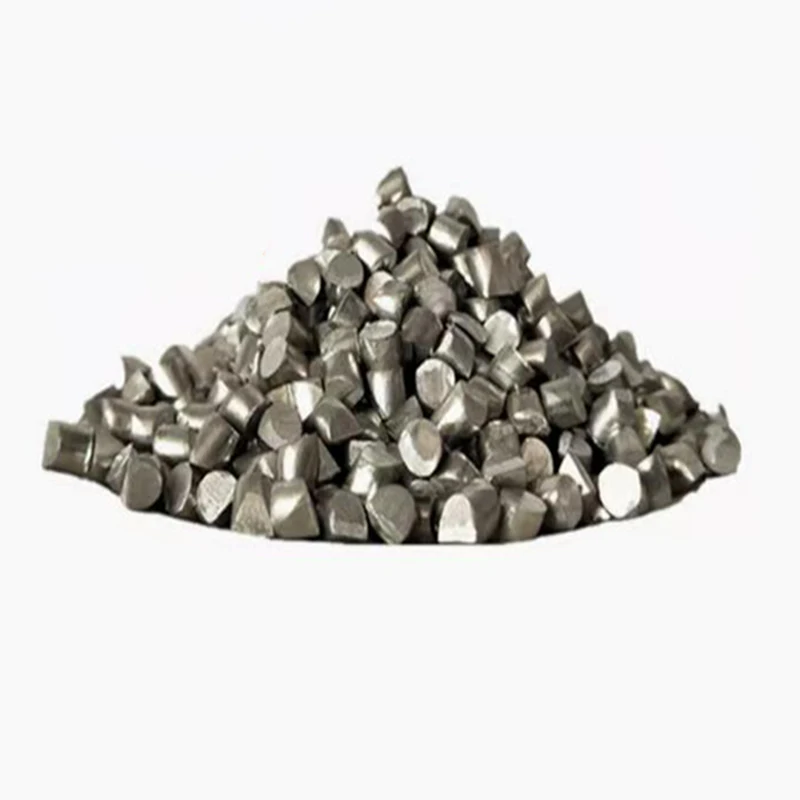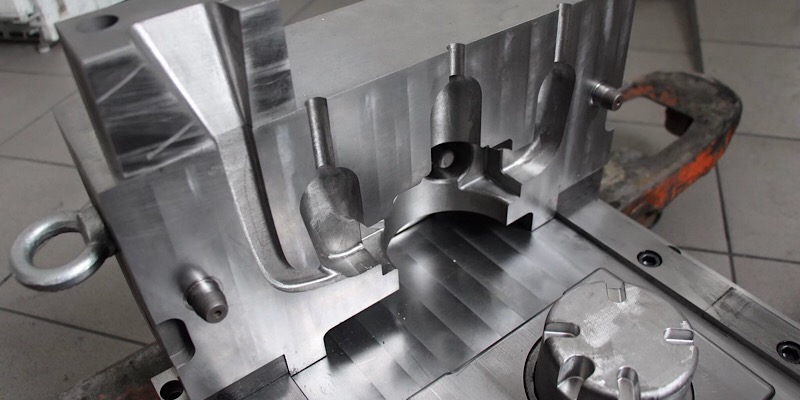How a Casting Foundry uses modern techniques for superior metal production
Recognizing the Manufacturing Refine and Maintenance Practices for Aluminum Factory Products
The production process for aluminum foundry products is elaborate and calls for a thorough understanding of multiple stages. From the melting of aluminum at heats to different casting techniques, each action plays an essential role. Additionally, maintenance methods ensure tools stays effective and items are devoid of problems. The complexities of these processes and their impact on product high quality raising crucial inquiries concerning best techniques and cutting-edge strategies in the sector.
Introduction of Aluminum Shop Products
Aluminum factory items are crucial elements in different industries, supplying a mix of lightweight toughness and rust resistance. These products are generally made use of in fields such as automobile, aerospace, and building, where toughness and performance are critical. Light weight aluminum's reduced density makes it a suitable product for applications calling for decreased weight without compromising structural honesty. The adaptability of light weight aluminum enables the development of complex geometries, dealing with diverse layout demands.
Furthermore, light weight aluminum factory products can be customized with various alloys to enhance specific residential or commercial properties, such as enhanced thermal conductivity or enhanced firmness. Their resistance to oxidation and deterioration assurances durability, making them appropriate for both outdoor and interior applications. The mix of these attributes adds to the expanding preference for light weight aluminum in modern-day production. As markets look for to maximize performance and sustainability, light weight aluminum foundry products continue to play a vital function in fulfilling these demands.
Thawing Process: Transforming Light Weight Aluminum
The melting procedure is a basic action in the manufacturing of aluminum foundry items, as it changes solid light weight aluminum into a liquified state appropriate for spreading. This procedure usually occurs in a furnace, where scrap aluminum or ingots are heated up to temperatures around 660 levels Celsius. The choice of furnace-- be it electric, gas, or induction-- influences the efficiency and cost of melting.
Throughout melting, careful factor to consider is offered to the elimination of impurities, such as oxides and other pollutants, which can adversely impact the top quality of the end product. Fluxes might be added to help in this filtration process, improving the fluidness of the molten steel.
On top of that, temperature level control is important to ensure uniformity and stop getting too hot, which can bring about oxidation. The melting procedure not only prepares aluminum for casting yet additionally plays a substantial function in establishing the integrity and homes of the final factory products.
Casting Strategies in Aluminum Foundry
Various casting techniques are employed in aluminum foundries to produce premium elements, each fit to various applications and requirements. Among the most typically made use of approaches are sand casting, die spreading, and investment casting. Sand casting uses a mixture of sand and binder to create molds, enabling big components and intricate shapes (aluminum metal casting). Pass away spreading, identified by the high-pressure injection of liquified light weight aluminum right into steel mold and mildews, produces accurate and repeatable elements, ideal for automation. Financial investment spreading, or lost-wax spreading, includes producing a wax model that is covered in a ceramic shell, making it possible for elaborate styles and fine details. Each method has its benefits; sand casting is affordable for low-volume manufacturing, while die spreading offers performance for high-volume runs. Investment spreading is preferred for elements calling for phenomenal precision and surface coating. Selecting the suitable method depends on aspects such as production volume, part complexity, and material residential or commercial properties
Completing Procedures for Light Weight Aluminum Elements
After casting methods have shaped the aluminum components, ending up procedures play a considerable duty in boosting their performance and visual allure. These procedures usually include machining, surface area therapy, and coating applications. Machining involves specific elimination of material to accomplish desired measurements and surface high quality. This is vital for making sure that parts fit perfectly right into their desired applications.
Surface area treatments, such as anodizing and sprucing up, are employed to improve corrosion resistance and enhance visual qualities. aluminum metal casting. Anodizing, specifically, gives a safety oxide layer, making the light weight aluminum much more visually attractive and long lasting

Maintenance Practices for Durability
Applying normal upkeep practices is crucial for making sure the long life of light weight aluminum shop products. Routine evaluations must be carried out to determine damage, as very early discovery can prevent costly repairs and prolong the life expectancy of parts. Cleaning devices and machinery routinely reduces the danger of contamination, which can detrimentally influence item top quality. Lubrication of moving parts is also essential, as it minimizes friction and wear, enhancing operational efficiency.
Additionally, the execution of a preventive maintenance schedule aids in systematically attending to prospective issues prior to they rise (aluminum metal casting). This consists of monitoring for leaks, making sure appropriate positioning, and adjusting equipment. Staff training on correct handling and upkeep techniques promotes a culture of care, which is vital for sustaining product honesty. Recording maintenance tasks supplies important understandings into efficiency fads, enabling for informed decision-making pertaining to future maintenance approaches.
High Quality Control and Testing in Light Weight Aluminum Foundry Manufacturing
Quality control and screening are extremely important in aluminum factory manufacturing, as they ensure that final products satisfy specified requirements and customer expectations. This procedure starts with raw material evaluation, making sure that aluminum alloys adhere to called for compositions. Throughout the manufacturing cycle, in-process evaluations are carried out to keep track of specifications like temperature level, stress, and material circulation.
Numerous examinations-- such as dimensional checks, aesthetic inspections, and non-destructive testing-- are carried out to determine any type of problems when spreading is full. Mechanical buildings, consisting of tensile toughness and solidity, are evaluated through standardized testing methods.
Adherence to industry standards, such as ISO and ASTM, is crucial for guaranteeing item high quality. Statistical process control techniques are typically utilized to analyze manufacturing data and facilitate continual renovation. By applying strenuous high quality control steps, aluminum foundries can boost product reliability and minimize waste, inevitably causing higher client contentment and operational performance.
Often Asked Inquiries
What Are the Environmental Impacts of Aluminum Foundry Procedures?
Aluminum foundry procedures can result in significant environmental influences, including air contamination read from discharges, water contamination from waste discharge, and energy intake contributing to greenhouse gas emissions, ultimately impacting local ecosystems and neighborhood wellness.
Exactly How Do Aluminum Costs Influence Foundry Production Decisions?
Aluminum rates considerably influence shop production decisions; higher costs might result in lower outcome or raised effectiveness actions, while reduced rates can encourage expanded manufacturing and investment in brand-new innovations to boost competitiveness and productivity.
What Precaution Are Crucial in Aluminum Foundries?
Important security measures in aluminum factories consist of protective gear, appropriate air flow to lower inhalation of fumes, routine devices maintenance, training on emergency situation procedures, and adherence to safety procedures to protect against accidents and injuries among workers.
Can Light Weight Aluminum Be Recycled, and Just How Is It Refined?
Light weight aluminum can without a doubt be recycled. The process includes collection, melting, and reforming the material right into new products, considerably minimizing energy intake and ecological effect contrasted to main aluminum production while maintaining worldly high quality.
What Prevail Defects in Aluminum Spreading and Their Causes?

The manufacturing procedure for aluminum foundry products is elaborate and requires a complete understanding of numerous phases. Aluminum shop products are important elements in different sectors, supplying a mix of lightweight toughness and deterioration resistance. The melting procedure is a fundamental action in the production of aluminum shop products, as it changes strong aluminum right into a molten state appropriate for casting. Executing regular upkeep methods is vital for guaranteeing the long life Continued of light weight aluminum foundry items. Quality control and testing are extremely important in light weight aluminum foundry production, as they assure that final products satisfy defined requirements and consumer expectations.